Saltire

A saltire is a heraldic symbol in the form of a diagonal cross, like the shape of the letter X in Roman type. The word comes from the Middle French sautoir ("stirrup"), possibly owing to the shape of the triangular areas in the design.[1]
It appears in numerous flags, including those of Scotland and Jamaica, and other coats of arms and seals. A variant, also appearing on many past and present flags and symbols, is the Cross of Burgundy flag.
A warning sign in the shape of a saltire is also used to indicate the point at which a railway line intersects a road at a level crossing.
In Unicode, the cross is encoded at U+2613 ☓ SALTIRE (HTML ☓). See X mark#Unicode for similar symbols that might be more accessible.
Christian symbol

The saltire appears on vexilla that are represented consistently on coinage of Christian emperors of Rome, beginning in the fourth century. Anne Roes found it on coins of Constantius II, Valentinian, Jovian, Gratianus, Valens, Arcadius, Constantine III, Jovinus, Theodosius I, Eugenius and Theodosius II, though she searched only coins at the British Museum.[2] In the ninth and tenth century the saltire was revived in Constantinople as a symbol of Christian-imperial power.
Anne Roes detected the symbol, which often appears with balls in the quadrants formed by the arms of the chi-cross, in standards that appear on the coins of Persepolis. She suggested that early Christians endorsed its solar symbolism as appropriate to Christ. She also wrote: "although it cannot be proved, ... in the white saltire of St. Andrew we still have a reminiscence of the old standard of the Persepolitan kingdom".[3]
Heraldry

Like other ordinaries, a single saltire is throughout — extending to the edges of the field — as in the arms granted to G. M. W. Anderson[4] ('Or on a saltire engrailed Azure two quill pens in saltire Argent enfiling a Loyalist military coronet Or'); unless it is blazoned as cut off, as in the coat of Kemble Greenwood[5] ('Sable a chevron Erminois cotised between three saltires couped or').
When two or more saltires appear, they are usually blazoned as cut off.
A saltorel is a narrow saltire; the term is usually defined as one-half the width of the saltire, and is a relatively recent "innovation" which is really not very different from a "fillet saltire" (as in the South African coat of National Cultural and Open-air Museum: "Or; an ogress charged with a fillet saltire surmounted by an eight spoked wheel or, and ensigned of a billet sable; a chief nowy gabled, Sable").
A field (party) per saltire is divided into four areas by a saltire-shaped "cut". If two tinctures are specified, the first refers to the areas above (in chief) and below (in base) the crossing, and the second refers to the ones on either side (in the flanks); an example is the coat of Sandwell Metropolitan Borough Council,[6] "Per saltire Vert and Or four Fers de Moline counterchanged in fess point a Fountain". Otherwise, each of the four divisions may be blazoned separately.
The phrase in saltire or saltirewise is used in two ways:
- Two long narrow charges "in saltire" are placed to cross each other, like as the keys in the arms of many entities associated with Saint Peter, crossing each other diagonally. Examples include: Suffolk County Council,[7] England ("Gules a Base barry wavy enarched Argent and Azure issuant therefrom a Sunburst in chief two Ancient Crowns enfiled by a pair of Arrows in saltire points downwards all or"); The Corporation of the Municipality of Brighton,[8] Canada ("Or two anchors in saltire between two fish hauriant in pale Azure and two apples in fess Gules, a chief enarched embattled Azure").
- When five or more compact charges are "in saltire", one is in the center and one or more lie on each arm of an invisible saltire. Examples: Winchester City Council,[9] England, 'Gules five castles triple towered, in saltire, argent, masoned proper the portcullis of each part-raised, or, and on either side of the castle in fess point a lion passant guardant that to the dexter contourny or'; Episcopal Church in the United States of America,[10] "Argent; a quarter azure charged with nine cross crosslets in saltire argent, overall a cross gules".
Flags

The Flag of Scotland, called The Saltire or St Andrew's Cross, is a blue field with a white saltire; according to tradition, it represents Saint Andrew, who is supposed to have been crucified on a cross of that form (called a crux decussata) at Patras. The St Andrew's Cross was worn as a badge on hats in Scotland, on the day of the feast of St. Andrew.[1]
The Cross of Burgundy, a form of the St. Andrew's Cross, is used in numerous flags across Europe and the Americas. It was first used in the 15th century as an emblem by the Valois Dukes of Burgundy. The Duchy of Burgundy, forming a large part of eastern France and the Low Countries, was inherited by the House of Habsburg on the extinction of the Valois ducal line. The emblem was therefore assumed by the monarchs of Spain as a consequence of the Habsburgs bringing together, in the early 16th century, their Burgundian inheritance with the other extensive possessions it inherited throughout Europe and the Americas, including the crowns of Castile and Aragon. As a result, the Cross of Burgundy has appeared in a wide variety of flags connected with territories formerly part of the Burgundian or Habsburg inheritance. Examples of such diversity include the Spanish naval ensign (1506-1701), the flag of Carlism (the nineteenth century Spanish conservative movement), the flag of the Dutch municipality of Eijsden and the flag of Chuquisaca in Bolivia.
The naval ensign of the Imperial Russian (1696–1917) and Russian navies (1991–present) is a blue saltire on a white field. Prior to the Union the Royal Scots Navy used a red ensign incorporating the St Andrew's Cross; this ensign is now sometimes flown as part of an unofficial civil ensign in Scottish waters. With its colours exchanged (and a lighter blue), the same design forms part of the arms and flag of Nova Scotia (whose name means "New Scotland"). The Brazilian cities of Rio de Janeiro and Fortaleza also use a blue saltire on a white field, with their coats-of-arms at the hub. The flags of the Spanish island of Tenerife and the remote Colombian islands of San Andrés and Providencia also use a white saltire on a blue field.
Saltires are also seen in several other flags, including the flags of Grenada, Jamaica, Alabama, Florida, Jersey, Logroño, Vitoria, Amsterdam, Breda, Katwijk, Potchefstroom and Valdivia, as well as the former Indian princely states of Khairpur, Rajkot and Jaora. The design is also part of the Confederate Battle Flag and Naval Jack used during the American Civil War (see Flags of the Confederate States of America). Arthur L. Rogers, designer of the final version of the Confederate National flag, claimed that it was based off the saltire of Scotland.[11]
Other uses


Symbol
In the old European Union standard, a black saltire set in an orange square is the hazard symbol for irritants (Xi) or harmful chemicals (Xn). It indicates a hazard less severe than skull and crossbones, used for poisons, or the corrosive sign.
In the politics of Scotland, both the Scottish National Party and Scottish Conservative Party use stylised saltires as their party logos, deriving from the flag of Scotland.
The trademark of X-Radium stoneware, patented cooking ware produced in the early 1900s by F. H. Griswold, was an X with radiating lines.
The international maritime signal flag for "Mike" resembles the flag of Scotland, but is square.
Signage
A saltire is the conventional road sign used to indicate the point at which a railway line intersects a road at a level crossing, called a "crossbuck" in this context.
A white saltire on a blue background (or black on yellow for temporary signs) is displayed in UK railway signalling as a "cancelling indicator" for the Automatic Warning System (AWS), informing the driver that the received warning can be disregarded.

In Cameroon, a red "X" placed on illegally constructed buildings scheduled for demolition is occasionally referred to as a "St Andrew's Cross". It is usually accompanied by the letters "A.D." ("à détruire" - French for "to be demolished") and a date or deadline. During a campaign of urban renewal by the Yaoundé Urban Council in Cameroon, the cross was popularly referred to as "Tsimi's Cross" after the Government Delegate to Yaoundé Urban Council Gilbert Tsimi Evouna.[12]
Less formally, on occasions of political controversy in many countries and times the usage of marking the face of a political opponent on a poster with an "X" is a commonly understood way of expressing strong disapproval, sometimes even the wish to kill the person whose picture is so marked.
The Maria Theresa thaler has a saltire to symbolize the 1750 debasement of the coinage, from 9 to 10 thalers to a Vienna mark, a weight of silver. An "X" is the Roman numeral symbol for "10".
In traditional timber framing a pair of crossing braces is called both a saltire and St. Andrews Cross.[13] Half-timbering, particularly in France and Germany, has patterns of framing members forming many different symbols known as ornamental bracing.[14]

Gallery of saltires
 Coat of arms of Barbados with Sugar Cane held in saltire.
Coat of arms of Barbados with Sugar Cane held in saltire.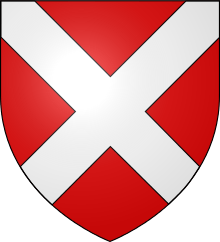 Coat of arms of the Neville family
Coat of arms of the Neville family
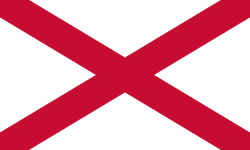

 Russian White Army flag of the General Markov Regiment
Russian White Army flag of the General Markov Regiment
 Cross of Burgundy Flag (used by the Spanish Empire 1506–1701 as a naval ensign, and up to 1843 as the land battle flag)
Cross of Burgundy Flag (used by the Spanish Empire 1506–1701 as a naval ensign, and up to 1843 as the land battle flag)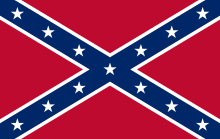


 Flag of Arkhangelsk
Flag of Arkhangelsk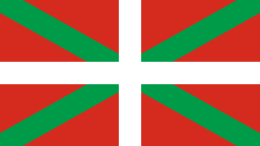 Flag of the Basque Country, (the Ikurriña)
Flag of the Basque Country, (the Ikurriña)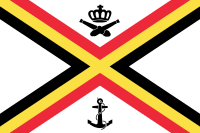 Flag of the Belgian Navy
Flag of the Belgian Navy Flag of Brevard County
Flag of Brevard County Flag of El Bierzo
Flag of El Bierzo Flag of Castro Urdiales
Flag of Castro Urdiales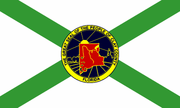 Flag of Clay County
Flag of Clay County Flag of Collier County
Flag of Collier County Flag of Coral Springs
Flag of Coral Springs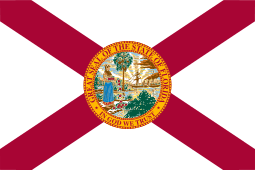


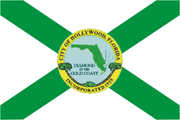 Flag of Hollywood, Florida
Flag of Hollywood, Florida
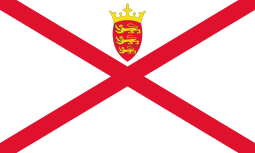
 Flag of the village of Katwijk
Flag of the village of Katwijk Flag of the municipality Katwijk
Flag of the municipality Katwijk Flag of Logroño
Flag of Logroño Flag of Luqa
Flag of Luqa Flag of Marsaxlokk
Flag of Marsaxlokk Flag of Miami-Dade County
Flag of Miami-Dade County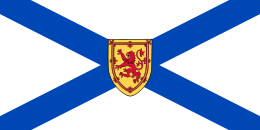
 Flag of Panama City, Florida
Flag of Panama City, Florida
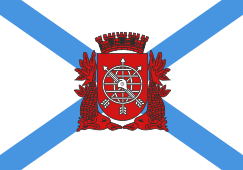
 Flag of Senglea
Flag of Senglea Flag of Swieqi
Flag of Swieqi Flag of Tallahassee
Flag of Tallahassee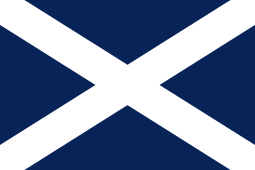
 Flag of Żabbar
Flag of Żabbar A blue-and-white saltire used on a road sign to represent the Flag of Scotland.
A blue-and-white saltire used on a road sign to represent the Flag of Scotland.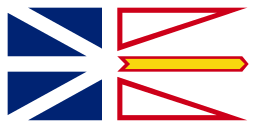
 Russian Naval Jack
Russian Naval Jack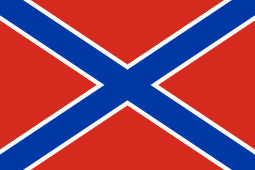 Flag of Novorossiya
Flag of Novorossiya
 Flag of Santo André, São Paulo
Flag of Santo André, São Paulo Flag of the former Indian princely state of Rajkot
Flag of the former Indian princely state of Rajkot Logo of the Christian Church (Disciples of Christ)
Logo of the Christian Church (Disciples of Christ)
-Common_Version_of_the_Colours.svg.png) |
_-_Common_Version_of_the_Colours.svg.png) |
Common Version of the Standard Colours (1700-1761)[15] |
Common Version of the Standard Colours (1761-1843)[15] |
-Version_of_the_Colours.svg.png) |
-Version_of_the_Colours.svg.png) |
-Version_of_the_Colours.svg.png) |
(1843-1868/1874-1931) Variant with the lesser royal arms quarters[15] |
(1871/1873) Reign of King Amadeo[15] |
(1874-1931) Variant with the national quarters[15] |
See also
| Wikimedia Commons has media related to Saltires. |
References
- ↑ "Saltire". Online Etymology Dictionary. Retrieved March 2016.
- ↑ Anne Roes, "An Iranian standard used as a Christian symbol", The Journal of Hellenic Studies, 57.2 (1937), pp. 248–51
- ↑ Roes 1937:251.
- ↑ "Anderson, George Milton William [Individual]". Archive.gg.ca. 2005-07-28. Retrieved 2012-09-09.
- ↑ "grant of arms to Kemble Greenwood". Retrieved 2013-10-25.
- ↑ "Civic Heraldry Of England And Wales-West Midlands". Civicheraldry.co.uk. Retrieved 2012-09-09.
- ↑ "Civic Heraldry Of England And Wales - East Anglia And Essex Area". Civicheraldry.co.uk. Retrieved 2012-09-09.
- ↑ "The Corporation of the Municipality of Brighton [Civil Institution]". Archive.gg.ca. 2005-07-28. Retrieved 2012-09-09.
- ↑ "Civic Heraldry Of England And Wales - Cornwall And Wessex Area". Civicheraldry.co.uk. Retrieved 2012-09-09.
- ↑ "ecusa.anglican.org". ecusa.anglican.org. 2012-08-30. Retrieved 2012-09-09.
- ↑ Coski 2005, pp. 17–18
- ↑ Célestin Obama. Tsimi Evouna s’attaque aux édifices publics, Le Messager, 23 Sept 2008 Archived December 17, 2008, at the Wayback Machine.
- ↑ Hansen, Hans Jürgen, and Arne Berg. Architecture in wood; a history of wood building and its techniques in Europe and North America.. New York: Viking Press, 1971. Print.
- ↑ Rudolf Huber and Renate Rieth, Glossarium Artis, 10, Holzbaukunst - Architecture en Bois - Architecture in Wood. Munich, Germany: Saur. 1997. 55. ISBN 3-598-10461-8
- 1 2 3 4 5
Sources
-
 This article incorporates text from a publication now in the public domain: Chambers, Ephraim, ed. (1728). "article name needed". Cyclopædia, or an Universal Dictionary of Arts and Sciences (first ed.). James and John Knapton, et al.
This article incorporates text from a publication now in the public domain: Chambers, Ephraim, ed. (1728). "article name needed". Cyclopædia, or an Universal Dictionary of Arts and Sciences (first ed.). James and John Knapton, et al.
.svg.png)
